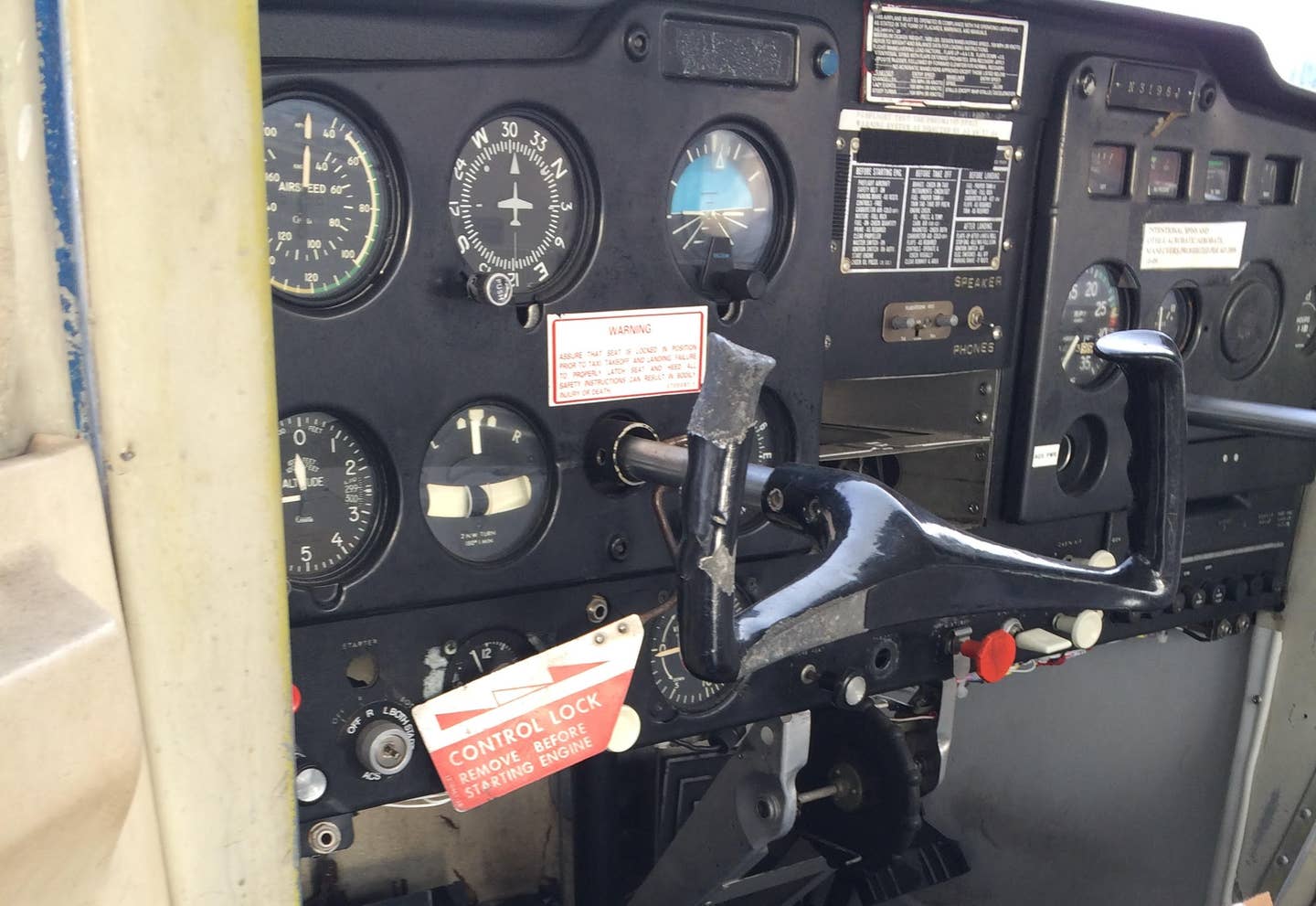What Tom Brady Can Teach You About Being an Effective Pilot

Tom Brady is always working to get better. Shouldn’t you do the same? Tori Richman/Tampa Bay Buccaneers
“Tom, it’s not bad,” reassures Tom House, the mustached throwing coach of Tom Brady, during Brady’s “Tom vs. Time” streaming series. It’s July 1, 2017, during the NFL preseason, and Brady, armored in his shoulder pads and mixed-matched sportswear, is in Los Angeles working with Coach House to improve his throw ahead of his 18th season in football’s highest league.
Known as “the professor of throwing,” House has made a living curating the perfect throw, first as a former left-handed relief pitcher who played eight seasons of Major League Baseball, followed by an even better second act as a pitching coach, first for Nolan Ryan, and now for Brady and others. His science-based throwing techniques have earned the respect of NFL’s biggest stars, which is why Brady, on a sunny 75-degree Friday, is eagerly taking directions from him.
During this episode, Brady is approaching his 40th birthday, playing longer than expected, with no signs of slowing down, especially after he and his New England Patriots famously roared back to a Super Bowl win against Atlanta the previous February. It isn’t unfair that the media has speculated on his possible retirement going into the season—no one has played as long as he had—but Brady is adamant he plans to go another five years.
Coach House pulls up alongside Brady between snaps and admonishes him. “The problem in the game is when you settle, then you have to create strength, then I really see it.”
Down the field is Tom’s practice receiver, who runs a series of routes to give Brady the variance he needs. Brady drops back into the pocket. He flings one. To me, it looks good. He flings another. “Wow, that guy can throw,” I’d imagine a passerby would say, but oddly, Tom Brady is in turmoil. He complains that he can’t get his posture right.
“I’m trying to work on my attention to details with my mechanics, so that when I cut it loose and I rip it in a meaningful game, does it go exactly where I want to go.”
What follows is a bizarre sequence of Coach House helping Brady adjust his hand and head to improve his throwing motion. It seems also he’s twisting his hip just a few inches too much.
“We’ve been trying to fix this,” House comments. “Don’t think too much.” He instructs Brady. They continue a series of convoluted motions that from afar look like a rehearsal of a lively Spanish dance.
By now, you might be wondering: what does this have to do with aviation and flight instructing?
Well, my instinct was to wonder why it is that Brady, a proven star and on the cusp of a potential sixth championship ring, is here with a coach when he could be out enjoying his status?
Surely, he’s earned the right to “ease up” based on his achievements, right?
“He’s mastered probably as much or more information and instruction than probably anybody in the history of football,” House said on the show. “And he’s still on the journey.”
Experts Focus On Getting Better
I usually share this clip with my flight students when we hit a rough patch due to learning plateaus, or if I think they’re getting complacent and we need a way over the hump.
I once read Carol Dweck’s “Mindset,” which gave me insight into “the fixed mindset”—”the born with it” label that has strangled progress for many could-be pilots when things get tough. She counters this mental roadblock with “the growth mindset” philosophy.
When coupled with my unabated optimism, I always believe my students can overcome any challenge.
Here’s how I would do it:
I would start by qualifying their experiences, reminding them that they only ended up in this mental holding pattern because, after all, they had done all the work required to get to this point. I adopted this “making it this far” principle from a speaker who visited my high school after we lost a national soccer final and who was smart enough to remind us that we could’ve only lost the final because we were there. My students usually perked up at this realization.
The next principle is my favorite go-to philosophy. I ask them what their ultimate goal is. I noticed that Coach House did this with Brady during that training session, aptly reminding him that he said his goal was to play to age 45, and it reinvigorated Brady. So, sure enough, for my students, this is their chance to go on about their airline, corporate, or even military aspirations.
For me, it was the perfect setup, because by establishing then that their flight training wasn’t for recreational pursuits, I could drive home to them that it was important for them to get past this blockade. Or to echo Coach House, “experts find a way to get one percent better.”
I add that experts are focused on finding improvements in the margins because they knew there was room for more. In another setting, Coach House suggested that even the best players in the game were only operating at 80% efficiency. There was so much room for improvement.
“Knowing what your strengths are, and what your weaknesses are, and trying to build on those things, and being open to changing those things, is something I’ve worked hard at, and being coached at…” Brady insists before the training session.
So, if the winningest quarterback had the awareness to pursue improvement, wouldn’t the imperative be just as high for all pilots?
When I began flight training, landing an airplane was just hard, rightfully. However, I made it a personal crisis. I quickly realized that I wasn’t cut out for this. It took me too long to overcome this mentality, happening only after realizing that all I needed was practice.
Moreover, the more I learned, the more I realized I was only scratching the surface. Furthermore, seeing that my role models were eager learners, this new posture became a strategic advantage. I could try things and fail, and restart. It took all the pressure off and made all the difference in the world. I got through all the rest of my training easily. I know now that anyone who is truly an expert at the craft isn’t focused on calling themselves that. Instead, they are only focused on getting better.
So, what are some practical applications for pilots?
There’s So Much To Learn
- Do you know your airplane tip to tail?
- Are you comfortable navigating the airspace at all levels & doing comprehensive flight planning?
- How about planning for all weather scenarios and developing a go/no-go philosophy?
- What is your step-by-step plan for all emergencies?
- What is your framework for learning new things outside a structured training environment?
- Most importantly, is there room for improvement?
Tom Brady did end up losing the Super Bowl that season, and everyone called curtains. What was a 40-year-old player thinking that he could win another Super Bowl? Was that training session with Coach House just a fool’s errand?
It turns out it didn’t matter because, fast-forward to 2021, the now-44-year-old Brady is up to seven rings and has begun his 22nd season with the hunger of the 199th draft pick that he was.
I think this is the greatest lesson of all for anyone getting into flying. While some of the mechanical skills and technical intuition might come easier for others, if you are willing to do the work personally required, you will be rewarded with a safe and long career.

Subscribe to Our Newsletter
Get the latest FLYING stories delivered directly to your inbox






